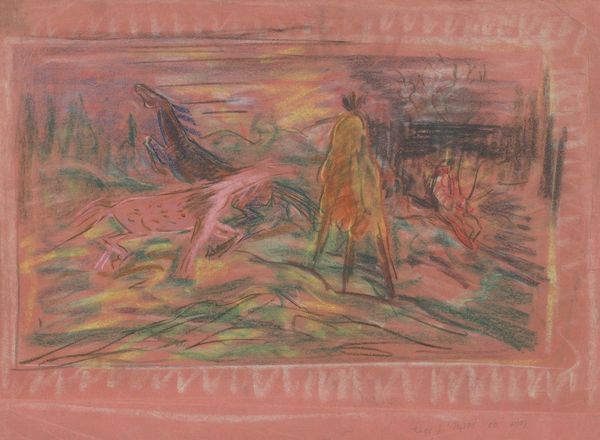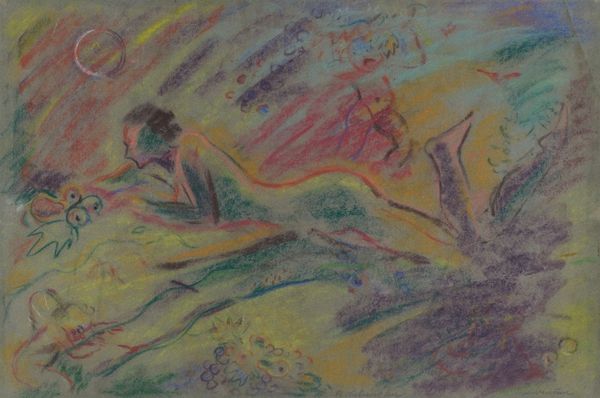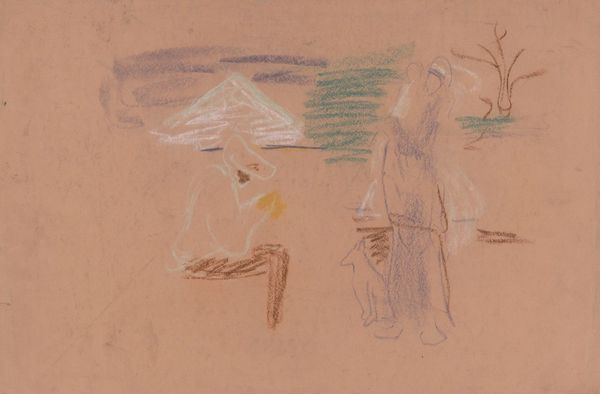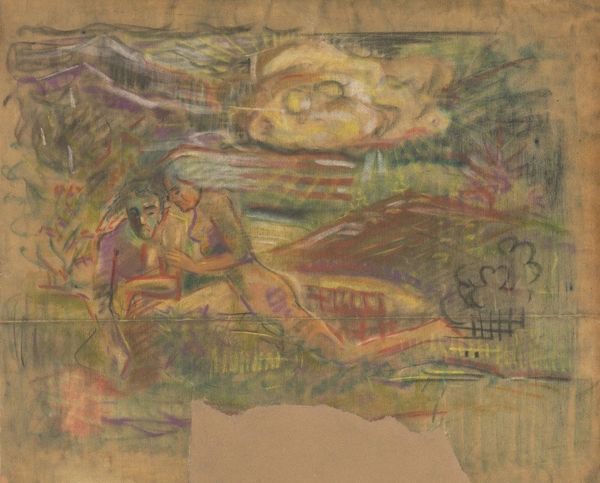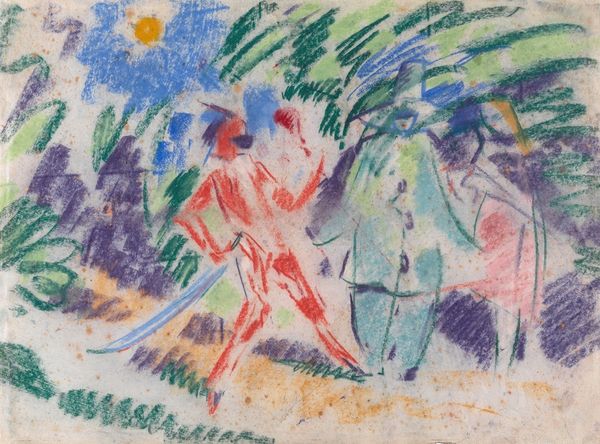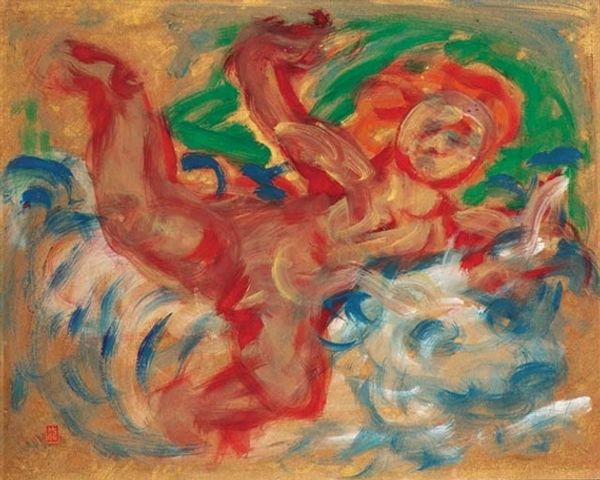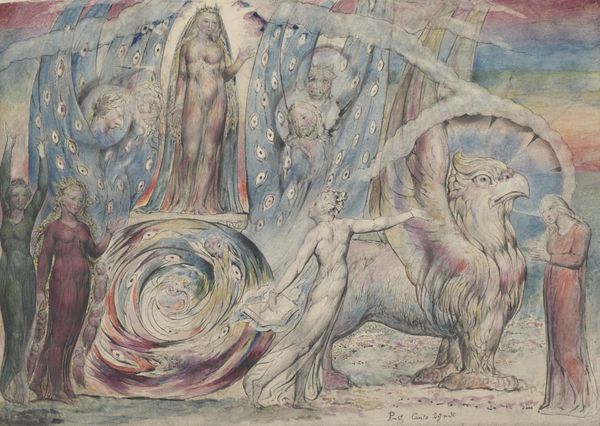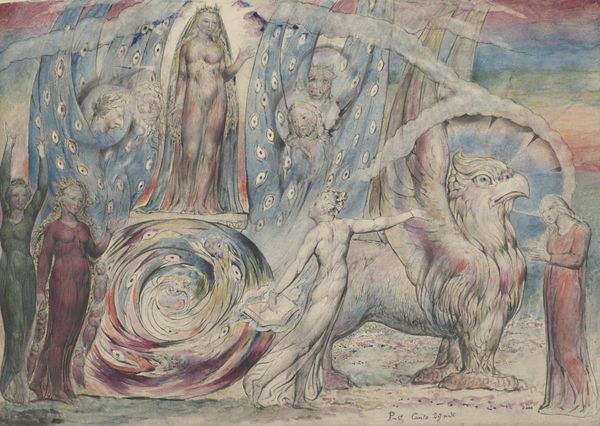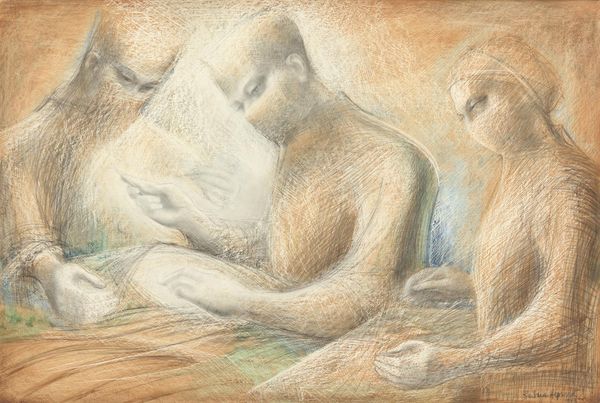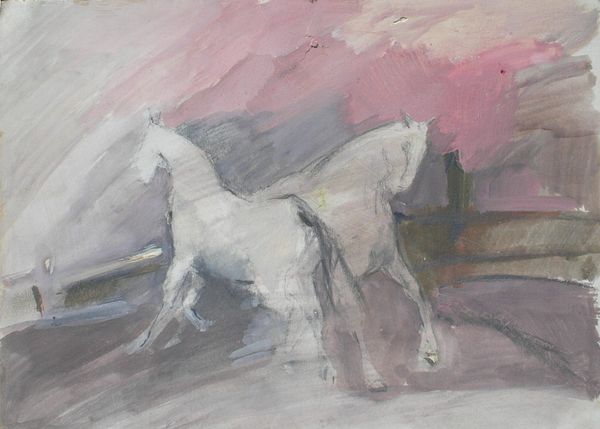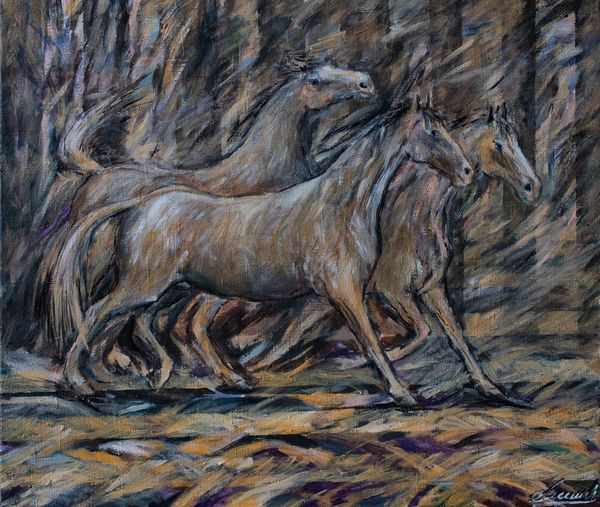
#
light pencil work
#
water colours
#
incomplete sketchy
#
possibly oil pastel
#
abstract
#
underpainting
#
painting painterly
#
watercolour bleed
#
watercolour illustration
#
sketchbook art
#
watercolor
Copyright: Public Domain: Artvee
Editor: This is "Woman with a Cow," created sometime between 1935 and 1944 by Arnold Peter Weisz-Kubínčan. The colors are really interesting; it almost looks like it’s been sketched with pastels, giving it a very raw feel. What do you see in this piece? Curator: Immediately, I’m drawn to the intimacy implied between the woman and the animal. Throughout history, the cow, especially in agrarian societies, is a potent symbol, a sacred matriarch embodying nurture and plenty. Consider its presence in ancient Egyptian iconography, or even as a universal image of motherhood across diverse cultures. What does the artist seem to be implying? Editor: That's interesting, I hadn't thought about the symbolic significance of the cow. She seems to be almost holding it, or leading it carefully. It looks protective. The colors do stand out as unconventional though; blues, reds, greens where you would usually expect earth tones. Curator: The color choices suggest an emotional landscape rather than a literal depiction, don't they? Perhaps referencing personal feelings, reflecting a symbolic world outside the canvas, or a specific moment in time during its creation. How does the rough, unfinished quality play into that? Editor: It makes it feel more immediate, almost vulnerable. Like a fleeting thought captured on paper. Curator: Precisely. That vulnerability invites us, as viewers, to project our own feelings of care, of concern, perhaps reflecting our complex relationship to the natural world during the time in which it was painted. Editor: I can see that. Thinking about it now, it feels like the artist is asking us to remember and reimagine a deeper, maybe even lost connection with animals. Thanks! Curator: A worthwhile consideration; it invites us to engage in cultural memory!
Comments
No comments
Be the first to comment and join the conversation on the ultimate creative platform.
